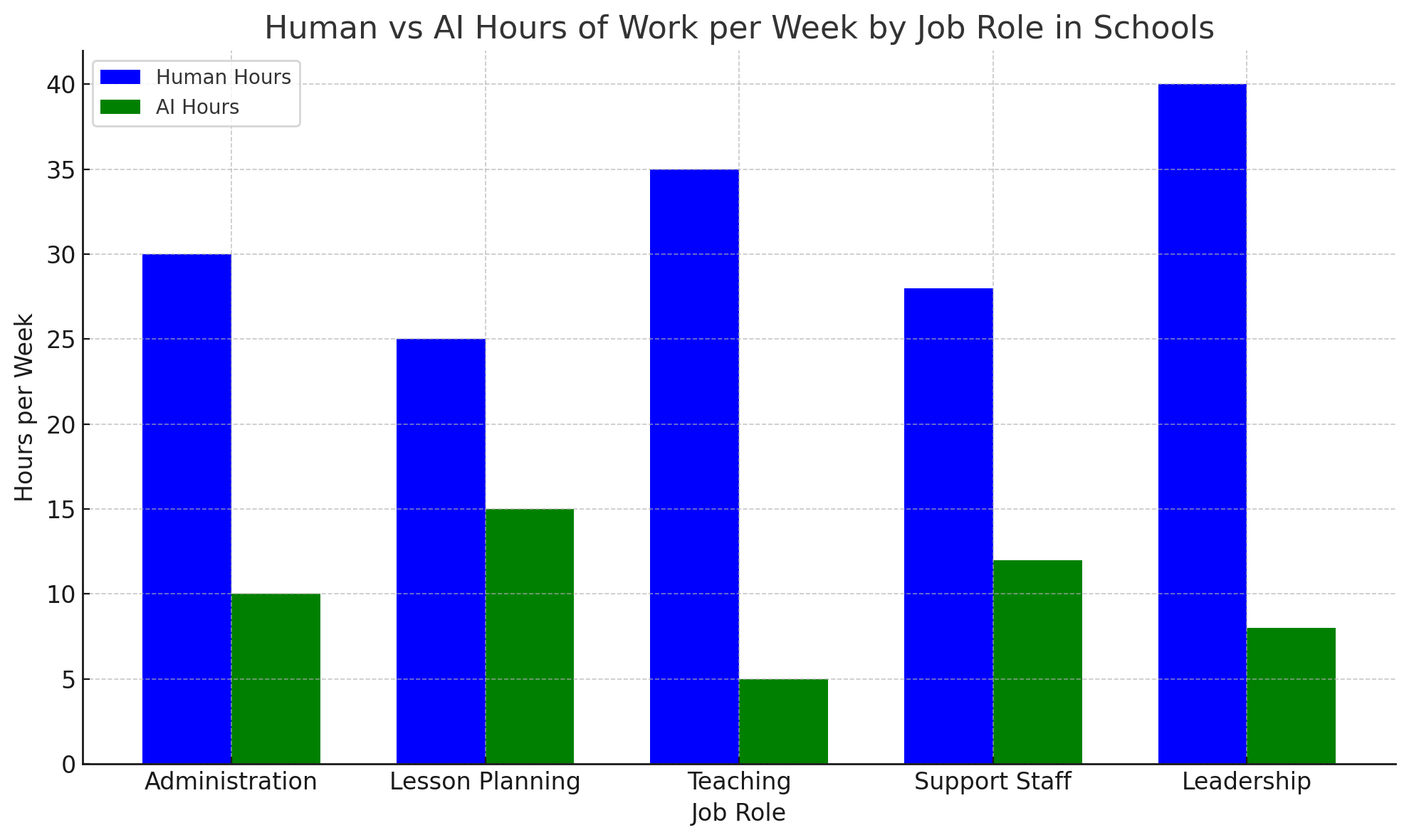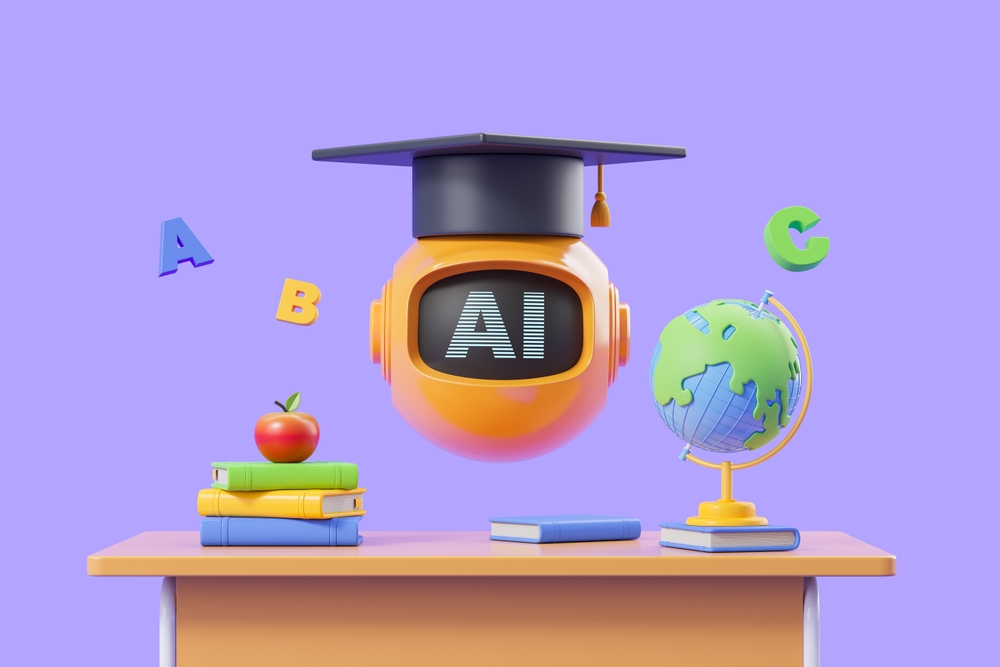How to Train Your Teachers and School Staff on AI and Get the Most Out of Gemini, ChatGPT, and Microsoft Copilot
Training your school staff on AI tools like Gemini, ChatGPT, and Microsoft Copilot isn’t about turning them into tech experts. Instead, it’s about showing them how these tools can make their teaching and administrative work easier, faster, and more effective. The goal is to shift their perspective from “AI is confusing” to “AI saves me time.”
AI Is Already in Education
We all know the challenges: endless emails, meetings that could’ve been handled in a quick update, and administrative tasks that take hours to complete. AI has the potential to simplify these processes, and it’s not as complicated as it might seem. Whether using Gemini for research, ChatGPT for communication, or Microsoft Copilot for document creation, these tools are designed to streamline tasks and reduce errors.
You don’t need advanced technical skills to use AI—just curiosity and a willingness to learn. That’s the real magic of AI: it turns complex tasks into manageable, time-saving activities once you know how to leverage it.
AI Use Cases That Transform Education
• ChatGPT for Creative and Instructional Support: Whether you’re drafting lesson plans, sending emails to parents, or brainstorming activities for students, ChatGPT can do the heavy lifting. It helps structure ideas, check tone, and even proofread content. It doesn’t replace your creativity—it enhances it. Tasks that once took hours can now be completed in minutes.
• Microsoft Copilot for Administrative Work: Think about how much time is spent on reports, presentations, or grading. Microsoft Copilot is like having an assistant that can summarise data, create presentations, and even pull insights from spreadsheets. These time-consuming tasks are automated, giving educators more time to focus on teaching and engaging with students.
• Gemini for Research and Data Analysis: When conducting student assessments, researching educational trends, or planning curriculum, Gemini’s AI-driven approach helps sort through vast amounts of information. It can quickly gather insights, freeing teachers from hours of research and allowing them to focus on applying that information to their classrooms.
Rolling Out AI Training in Schools
1. Start Small, Expand Gradually: Instead of overwhelming staff with every AI feature, start by integrating one tool, like ChatGPT, into a specific task, such as lesson planning or email communication. Once they experience the benefits, they’ll be eager to explore other tools. Focus first on tasks that take up the most time, and show how AI can reduce that burden.
2. Hands-On Workshops: AI training should be practical, not theoretical. Encourage teachers and staff to bring real challenges to the table and solve them using AI during the training. How can Copilot streamline report writing? How can Gemini help analyze student performance data? Make the training directly relevant to their day-to-day responsibilities.
3. AI Champions: Identify staff who are naturally enthusiastic about technology and appoint them as AI champions. These early adopters can provide support to others, share best practices, and experiment with new tools. Peer learning often works best, as colleagues can help each other navigate new technologies.
4. Regular Check-ins: AI is constantly evolving, and so will the ways your staff uses it. Schedule regular “AI office hours” where teachers and school staff can ask questions, troubleshoot issues, or share tips. Continuous learning will ensure that AI tools are being used effectively and efficiently.
Embedding AI in Daily School Operations
The real value of AI tools like ChatGPT, Copilot, and Gemini comes when they’re embedded into daily routines. It’s not about using AI because it’s trendy—it’s about making it an integral part of how the school operates. Over time, AI stops feeling like a separate tool and becomes a seamless part of how work gets done.
The Impact on Education
By incorporating AI into school workflows, teachers and staff will spend less time on repetitive, administrative tasks and more time on what matters most—teaching, supporting students, and improving the overall learning environment. Fewer mistakes, more efficient operations, and higher-quality work are the ultimate goals for any educational institution.
Training your school staff on AI is about more than just learning a new tool. It’s about transforming the way they approach their work. Once they experience how AI can reduce time spent on busywork and increase the quality of their output, the potential to enhance education becomes limitless.

In the context of schools, AI is quickly becoming an integral part of the education system, reshaping how teachers, school staff, and administrators manage their time and approach their roles. Just as with other sectors, the impact of AI in education isn’t uniform—certain areas see a more significant transformation, while others remain human-centric. Here’s how this shift is playing out:
Take administrative tasks, for instance. AI is revolutionising repetitive jobs like scheduling, grading, and attendance tracking. Automated systems can handle much of this workload, freeing up time for teachers and school staff to focus on more important tasks—like individualised student support, lesson planning, and real-time classroom engagement. AI in these roles is a game changer, lightening the administrative burden so that educators can dedicate more time to their students.
In lesson planning and curriculum development, AI tools can analyse data to recommend resources, personalise learning paths for students, and even suggest creative activities tailored to different learning styles. Yet, the art of teaching—the nuance of crafting a lesson that resonates with students, engaging them, and adapting on the fly—remains the teacher’s domain. AI serves as a powerful assistant, but the core of teaching still relies on human insight and connection.
School staff, such as those in the front office or support roles, are also benefiting from AI. Automated systems can manage tasks like communication with parents, handling routine inquiries, and maintaining student records. These tools allow staff to shift their focus to higher-value work, such as improving school processes, addressing unique concerns, and creating a welcoming environment for students and parents alike.
Even in areas like student behaviour tracking and school safety, AI is starting to make an impact. Systems that monitor student behaviour and flag potential issues are becoming more prevalent, giving teachers and school counsellors real-time data to act upon. While these tools are helpful, the role of educators and staff in interpreting this data and making informed decisions is irreplaceable. AI provides the information, but human judgment is still crucial.
In terms of school leadership and management, AI is helping principals and administrators streamline operations. Whether it’s optimising budgets, tracking academic performance, or planning school resources, AI offers insights that can lead to more informed decisions. Yet, much like project management in other industries, school leadership requires a human touch—AI can provide the data, but leadership, vision, and strategic decision-making remain firmly in human hands.
Ultimately, the impact of AI in schools mirrors trends seen across other industries. It’s not about replacing educators or staff but enabling them to focus on what they do best—teaching, guiding, and supporting students. Schools that successfully integrate AI will find their teams able to spend less time on mundane tasks and more time on creative, problem-solving, and student-focused work. The key, as always, is training and adopting the right tools so that AI can become a valuable partner in the education system.







